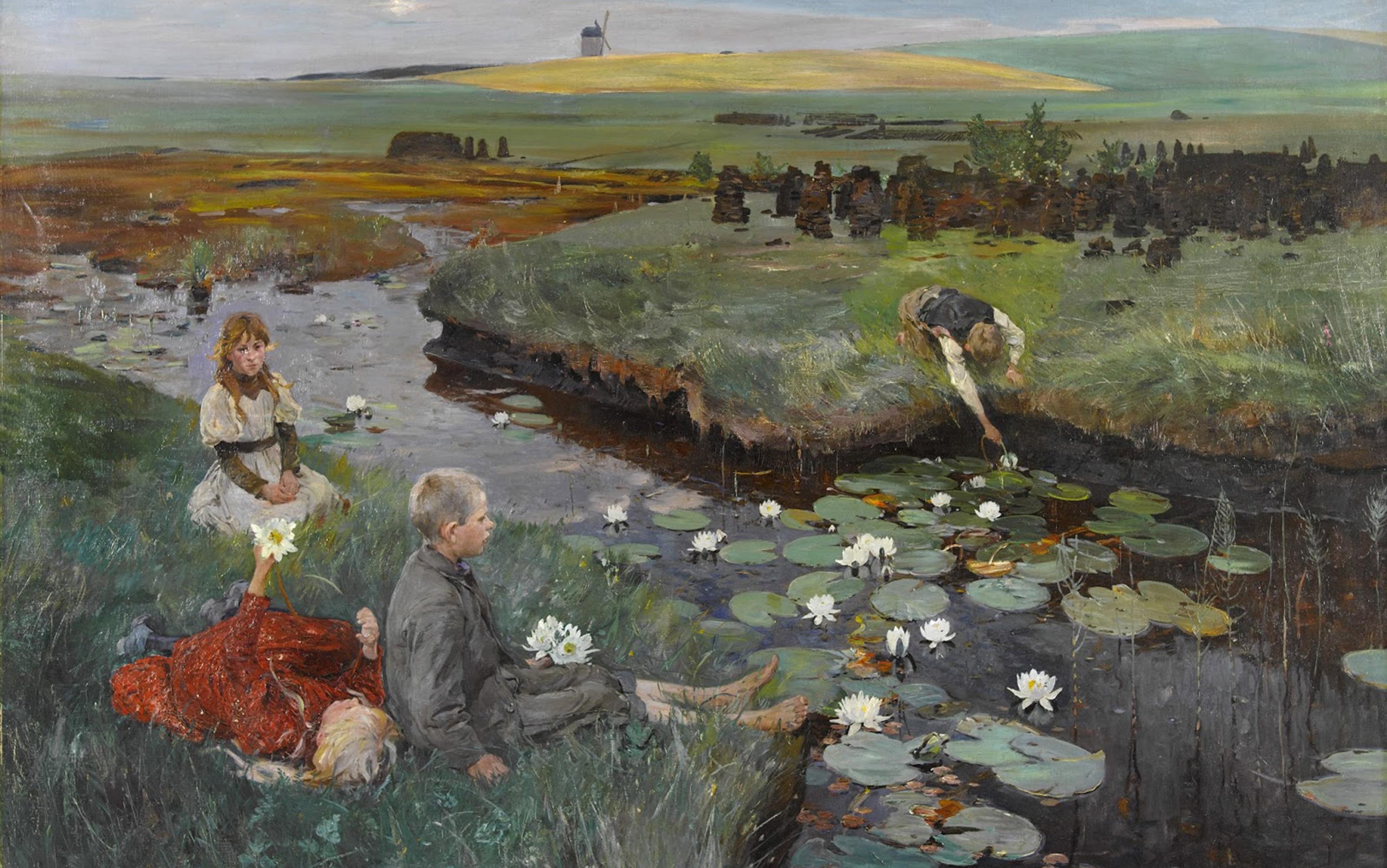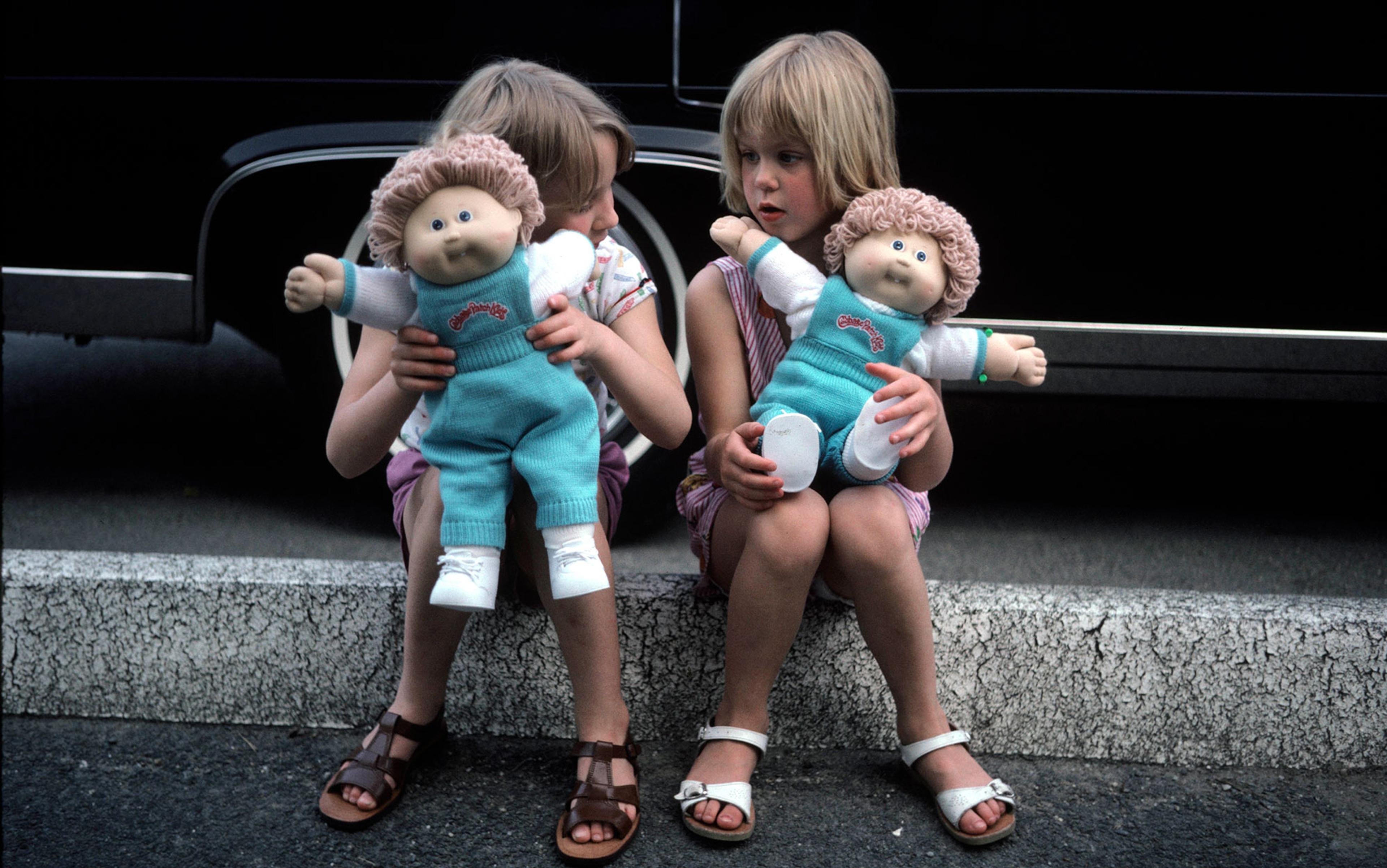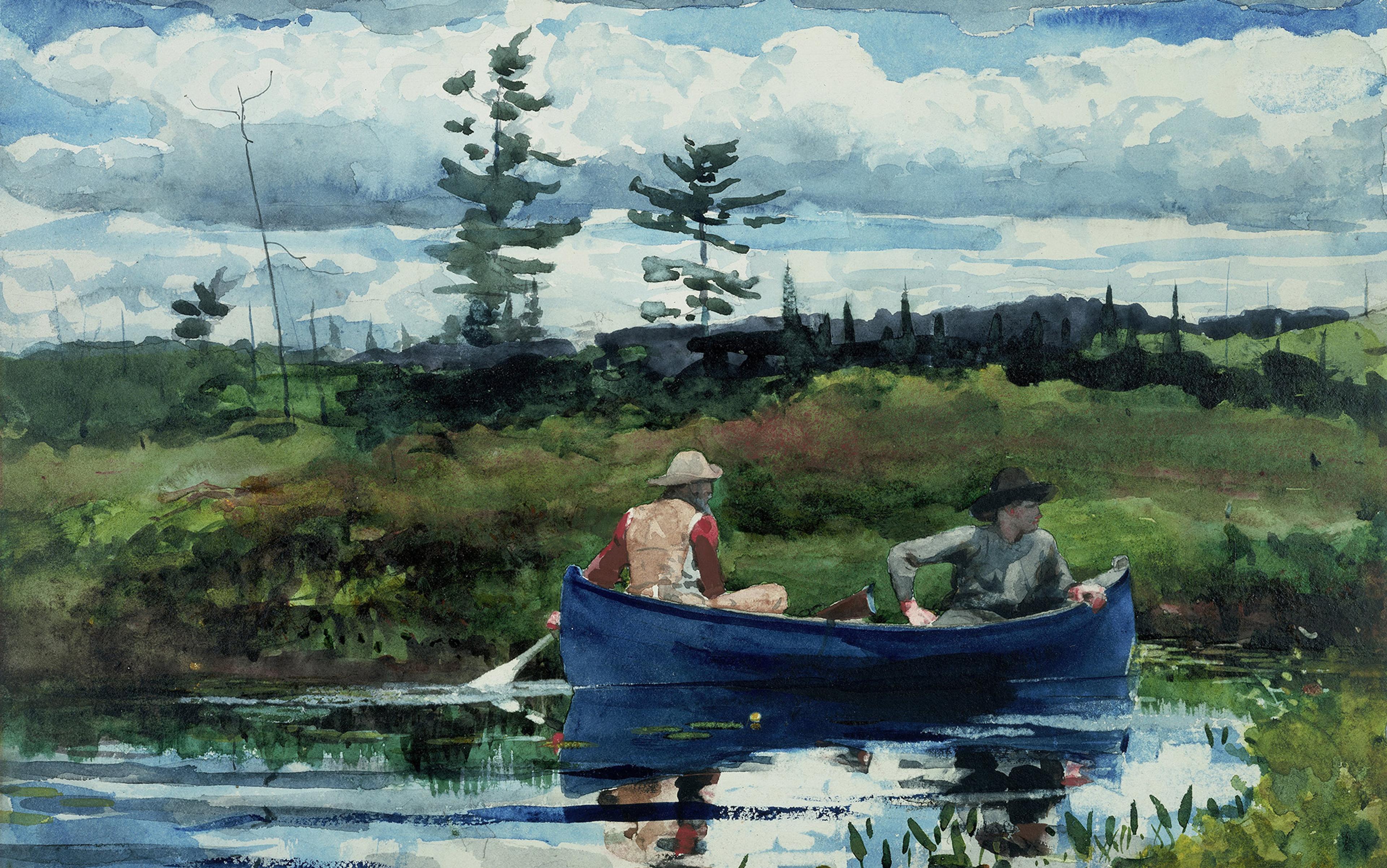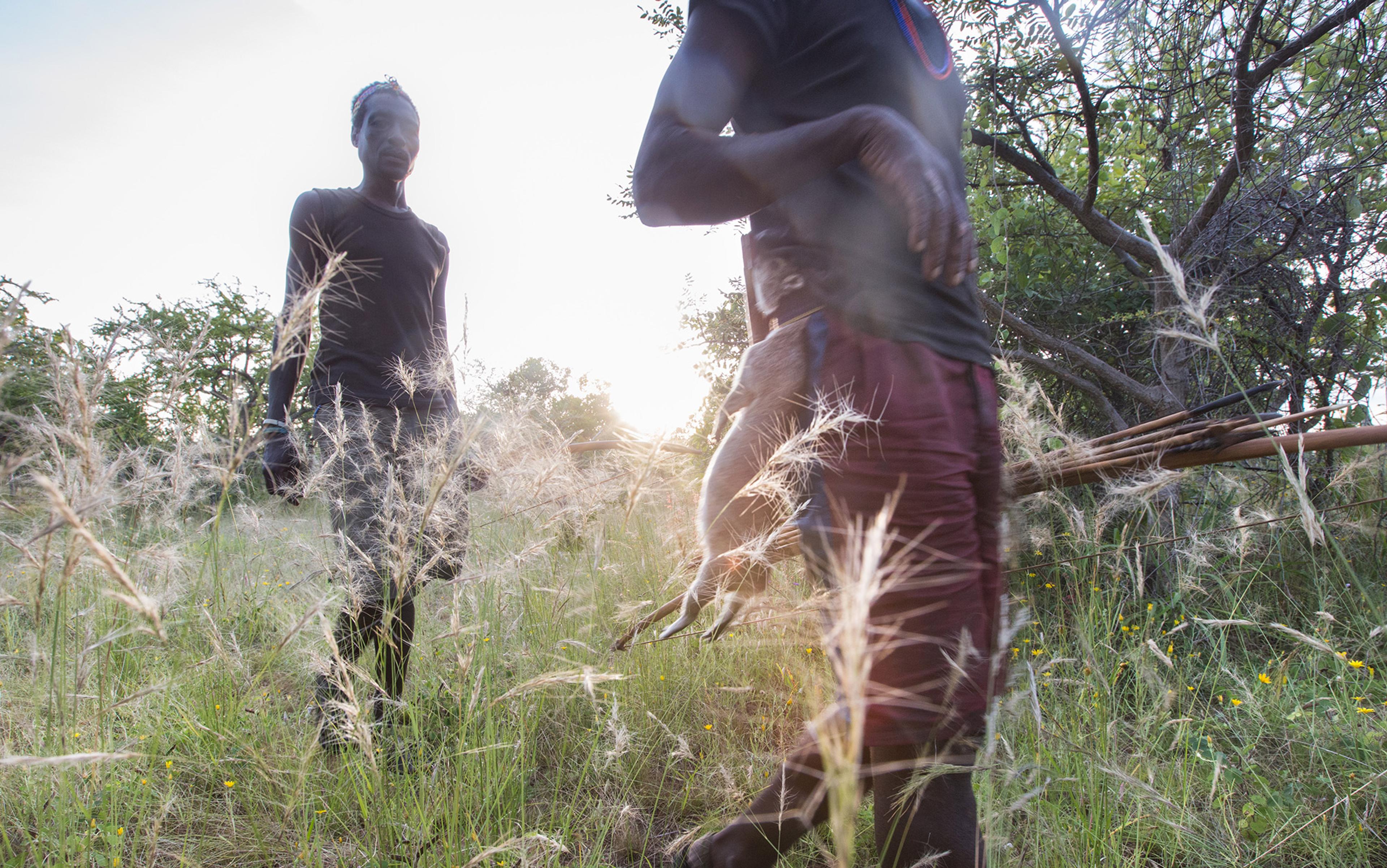Golden was the first race of articulate folk
Created by the immortals who live on Olympos.
They actually lived when Kronos was king of the sky,
And they lived like gods, not a care in their hearts,
Nothing to do with hard work or grief,
And miserable old age didn’t exist for them.
From fingers to toes they never grew old,
And the good times rolled.
(Hesiod, c.700 BCE, trans. Stanley Lombardo)Things ain’t what they used to be and probably never was.
(Will Rogers)
‘Make the world great again!’ thunder the prophets, religious and secular alike, who know our need for mythic comfort in the face of unjust reality. And so, with a paradoxical mix of pride and self-loathing, humanity tells the same story again and again, about the fallen present and a potential return to paradise past – to Hesiod’s idyllic golden age, Confucius’s beloved Zhou dynasty, the Hindu Satya Yuga, the Garden of Eden, grandpa’s garden, grandma’s kitchen – when we were authentic and pure, God’s children, noble savages, hunter-gatherers, off-the-grid, on the farm, keeping promises, respecting elders, healthy and happy – back to the good old days.
Longing for the past is generally referred to as nostalgia – a gentle, tender feeling that might make these stories seem like nothing more than harmless sentimentality. But it is crucial to distinguish between wistful memories of grandma’s kitchen and belief in a prior state of cultural perfection. The latter form of nostalgia currently serves as the ideological foundation for political movements like Greece’s Golden Dawn, which calls for a return to Hellenic glory via radical right wing nationalism, and ISIS, which waxes rhapsodic about a distorted Islamic golden age. This alone should serve to make us warier of nostalgia’s dark side, which, I fear, is badly underestimated, and wreaks havoc not only in politics but also medicine and anthropology. Far from being harmless, ‘the good old days’ is a virulent falsehood that infects those whose intellectual defences have been weakened by fear and insecurity. It is easily weaponised by power-hungry propagandists who seek to replace nuanced discourse with patriotic platitudes, and diverse ideologies with homogenous tribal nationalism: Mao, Pol Pot, Hitler, the Ku Klux Klan. In its endless incarnations this myth has shackled people’s thoughts and actions to the promise of a fiction, facilitating evil on all scales, from everyday racism to the greatest human rights catastrophes of the 20th century. Faced as we are with yet another global epidemic of golden age rhetoric, the time has come to inoculate ourselves against the good old days once and for all.
Believers in this fairy tale insist that back then – whenever then was – everyone felt content with their existence. Acknowledging that the real-life protagonists of golden age myths themselves pined for an earlier golden age would spoil the story, or at least ironise it. But they did: the ancient Chinese, the ancient Greeks, the ancient Egyptians, Americans when America was great, even the pre-agricultural innocents that populate the romantic fantasies of Montaigne, Rousseau, and their modern Luddite inheritors. ‘In the days when diseases were still unknown and human beings were unacquainted with suffering,’ begins a myth of the South American Bororo people, recounted by anthropologist Claude Levi-Strauss in The Raw and the Cooked (1964). It was wonderful back then, the myth goes on, until a teenage boy violated custom and refused to live in the men’s hut, whereupon his grandmother farted repeatedly on his face while he slept, setting off a tragic chain of events that released diseases into the world. If only kids had followed the old rules, no suffering! (Maybe if we follow them today?) Indigenous peoples from every continent tell similar stories, of a time when pain was unknown and the acquisition of food required no labour. Given the cross-cultural and trans-historical pervasiveness of the golden age archetype, it’s a good bet that the first story ever told was a legend about immortal cavemen who cooked bigger woolly mammoths over warmer fires.
And yet, those who impartially consider the past cannot fail to notice its shortcomings: tiny tombstones that dot old graveyards, routine enslavement of human beings, ghastly physical punishments for minor legal infractions, basic ignorance of scientific facts, and so on, back as far as you like in any culture you choose. These disagreeable features tend to vanish when one looks back in time through rose-tinted glasses, rendering the present dismal by comparison. Even the weather in golden age myths is, of necessity, unrealistic, as noted by the historians Frank and Fritzie Manuel in 1979: ‘Paradisiacal climates are equally temperate in all times and places, eternal spring for the Eskimos, gentle zephyrs for the Greeks.’ Technological progress? Bah! Back then you didn’t need fire or air conditioning.
Overwhelmed by this kind of nonsense, Voltaire wrote an exasperated critique of the ‘bon vieux temps’ (good old times) in 1764, concluding decisively: ‘There are things in which the moderns are superior to the ancients; and others, though very few, in which we are their inferiors. The whole of the dispute reduces itself to this fact.’ Still earlier, around 300 CE, a Chinese text attempted a more realistic portrayal of primitive man, likely in response to countercultural tales of uncivilised bliss: ‘In ancient times people ate vegetation and drank from streams; they picked fruit from trees and ate the flesh of shellfish and insects. In those times there was much illness and suffering, as well as injury from poisons.’
There is now near-universal consensus in the psychological community about nostalgia’s benefits
My case against golden age myths would have been easier to make in the good old days, back when nostalgia of any kind was widely understood as pathological. The word nostalgia first appeared in the title of a 1688 study by the Swiss physician Johannes Hofer, Dissertatio Medica de Nostalgia oder Heimwehe. The term transformed homesickness – ‘nostos’ means returning home in Greek – from an ambiguous emotion into an official disease, thought to be triggered by excessive exposure to foreign environments. When psychology emerged as a discipline in the 20th century, nostalgia was reclassified as form of mental illness. Under the influence of Freudian theory, psychoanalysts located its root cause in traumatic separation from the symbolic pre-Oedipal mother. Thus the ‘foreign environment’ that triggered nostalgia, formerly spatial, took on an additional temporal dimension. The homeland nostalgics longed for was, more fundamentally, their childhood home, the warmth of their mother’s womb, a stable context tailored to the satisfaction of their desires. Krystine Batcho, a psychologist at Le Moyne College and pioneer in the study of nostalgia, has shown that by the 20th century, a symbolic, spatiotemporal understanding of nostalgia was commonplace, found in dictionary definitions like this one from Webster’s: ‘A longing for something far away or long ago.’
In response to these changes in definition, contemporary sociologists and psychologists have spent several decades redeeming nostalgia from its original pathological connotations. Specialists in adolescence noted that teens use nostalgic memories to cope with difficult transitional periods, turning glimpses of a golden age – childhood – into hope for a better future. Nor was it just adolescents: Batcho cites case studies of elderly Holocaust survivors and sufferers of dementia from the ’90s that indicated nostalgia could help with ‘reweaving the broken threads of life’s history’. Study after study has borne out these positive effects, and there is now near-universal consensus in the psychological community about nostalgia’s benefits.
If nostalgia is as beneficial as it appears to be, then cynics who mock the good old days risk undermining one of psychology’s most empirically validated coping mechanisms. But the majority of nostalgia studies and the articles that extol its virtues – ‘Believe in Yesterday’; ‘Is Nostalgia a Fountain of Youth?’ – suffer from a serious flaw: they fail to distinguish between different types of nostalgia. Recently, however, some scholars have begun to nuance the concept by identifying three basic types: personal, historical, and collective. Personal nostalgia flows from first-person memories – ‘this is the way I was’ – while historical nostalgia drops the first person in favour of generalisations about the distant past – ‘this is the way it was’. Collective nostalgia, the third type, refers to a longing for past times that evoke feelings of group membership, and it can characterise both personal and historical nostalgia.
If you were a researcher seeking to trigger these with music (a technique used in some studies), you might choose the Beatles’ ‘Yesterday’ for personal nostalgia: ‘Yesterday, all my troubles seemed so far away… Yesterday, love was such an easy game to play.’ The memories are idealised versions of the singer’s personal past, as a coping response to trauma and fragmented identity (‘Suddenly, I’m not half the man I used to be’).
For historical nostalgia, there’s no better song than The Judds’ 1986 song ‘Grandpa (Tell Me ‘bout The Good Ol’ Days)’:
Grandpa
Tell me ‘bout the good old days
Sometimes it feels like
This world’s gone crazy
Grandpa, take me back to yesterday,
Where the line between right and wrong didn’t seem so hazy.
Here, too, nostalgia functions as a response to trauma – the disturbing moral ambiguity of the present – but ‘yesterday’, instead of referring to the singer’s personally remembered past, now evokes the distant past of her grandpa’s generation, which she depends on him to confirm.
Empirical research on the effects of golden age thinking – that is, collective historical nostalgia – is still in its infancy. The little that exists has focused on nationalist nostalgia, and the results are sobering. In a 2014 study, participants played a game in which they were presented with the opportunity to punish a transgression against an in-group member by sacrificing money. The in-group was defined by nationality – in this case, Irish. When participants were primed with collective personal nostalgia – ‘recall a past event experienced with fellow Irish-people’ – it led individuals to sacrifice more money ‘in order to punish a transgression perpetrated against an in-group member’.
Another study from 2014 led by the Dutch psychologist Anouk Smeekes, published as ‘Longing for the country’s good old days’ found a significant correlation between collective historical nostalgia for ‘the way it was’ in the Netherlands and opposition to the rights of Muslim immigrants. A follow-up study suggested that national nostalgia fuelled out-group prejudice via a sense of ethnic national identity. ‘You see this nostalgic discourse in Western Europe, or with the rise of Donald Trump,’ says Smeekes, explaining the inspiration for her work. ‘They say: “There were glory days in our national past, when everyone was safe, and then all the changes came, one of which is immigration, and if you vote for me I will return us to the glorious past and give back the country to its original people.”’
This new research demonstrates how, in the crucible of collective historical nostalgia, personal selflessness can become in-group selfishness, a phenomenon described by theologian Reinhold Niebuhr in his 1932 classic Moral Man and Immoral Society. Although individuals are naturally self-interested, argues Niebuhr, they also possess a remarkable ability to ‘consider interests other than their own’. Groups are different: they consolidate the egoism of their members at the expense of out-group empathy. ‘The frustrations of the average man, who can never realise the power and glory which his imagination sets as the ideal, makes him the more willing tool and victim of the imperial ambitions of his group,’ writes Niebuhr. ‘His frustrated individual ambitions gain a measure of satisfaction in the power and aggrandisement of his nation.’
Retrospective aggrandisement of one’s nation is often shot through with racism and xenophobia. The result is tribal nationalism that, at its worst, motivated Hitler’s death camps, supposed to return Germany to its Aryan golden age, and Pol Pot’s killing fields, an integral part of his plan to bring about ‘Year Zero’ in Cambodia, complete with a pre-capitalist economy and no foreigners. None of this is surprising, given that golden age myths have always soothed the trauma of fragmented identity with a purified fantasy of ethnic and cultural homogeneity. ‘Golden was the first race, created by the immortals,’ writes Hesiod, rendering paradise plausible through the power of genealogy. Depictions of Adam and Eve never fail to affirm their racial continuity with the culture that produced them. Just as early nostalgics sought comfort in memories of literally familiar faces, so, too, the golden age myth shows believers the glorious beginnings of their own bloodline. Has this world gone crazy, as the Judds sing? Well of course it has, polluted by the influence of alien races, strange latecomers to our homeland, made of inferior material. Don’t blame yourself. Remember – back when it was only us there was no suffering, and the line between right and wrong wasn’t so hazy.
Fear and insecurity are the disease vector for stories about past and future glory
These wildly implausible reconstructions of the past owe much of their appeal to qualities shared with a close literary relative: the fairy tale. Fairy tale heroes, like the heroes of collective historical nostalgia, usually have a magical birth history – the third brother, say – that in itself is sufficient explanation of their inherent virtuousness and eventual triumph. Both genres organise the overwhelming complexities of reality according to ethical and ontological binaries: good and evil, right and wrong, royalty and commoners, humans and monsters, natives and foreigners. Most importantly, as the great Swiss scholar of fairy tales Max Lüthi has pointed out, myths of lost paradise and fairy tales both assume a reassuring narrative model of order/disorder/order: prior perfection, current chaos, happy ending. Yes, the world is a terrifying, uncertain place. But follow a few simple rules, slay a few ogres, and all will turn out for the best, just like it was before the ogres came.
Demagogues who wish to infect the populace with golden age myths must therefore insist on disorder of present times. Fear and insecurity are the disease vector for stories about past and future glory. ‘Decades of progress bringing down crime are now being reversed,’ warns Donald Trump in his convention speech. There is ‘chaos in our communities’, he says. America and the world are ‘far less safe’ than they once were. The ogres are foreigners, ‘released by the tens of thousands into our communities’. To regain paradise they must be expelled by whatever means necessary, and kept out at all costs. Calling attention to this aspect of Trump’s vision, right-wing pundit Ann Coulter tweeted: ‘I like hearing CNN’s Fareed Zakaria ask in a thick Indian accent, “What kind of America do we want to return to?”’ The answer, needless to say, is that a great America didn’t – and won’t – include foreign ogres that talk funny.
In a clever twist, romantic tales of noble savages turn us into the ogres. While maintaining the same basic narrative structure, this iteration of the golden age myth trades the pleasure of pride for the catharsis of self-abnegation. Are we not sinners? Yes! Are we not fallen? Yes! And what better way to prove it than through comparison with the inhabitants of a garden paradise, frozen in time, uncorrupted specimens of humanity who never ate from the tree of knowledge. Scores of anthropologists have feted these happy innocents as ‘peace loving’ and ‘harmless’, happily enjoying a surfeit of leisure time while we post-agricultural rubes labour long, miserable hours, spending what’s left of our days in conflict and ill health. They are the de facto spokespeople for Palaeolithic diets and ‘barefoot’ running shoes, the stars of popular bestsellers such as Jared Diamond’s Guns, Germs and Steel (1997) and Yuval Noah Harrari’s Sapiens: A Brief History of Humankind (2014).
Alas, the noble savage is no less mythical than Hesiod’s golden race, and fails to withstand serious empirical scrutiny. Take the ‘leisured hunter-gatherer’ thesis, which draws support from anthropologist Richard B Lee’s ’60s study of !Kung San tribespeople in southern Africa. According to Lee, the tribespeople worked an average of only 2.5 days per week – a golden age of leisure compared to us workaholic moderns. But in reality it was not, counters historian Rachel Laudan recently, at least not if you take into account the work that went into processing and preparing food once it was hunted and gathered. This, Laudan emphasises, was not a part of Lee’s equation. ‘I have considered housework [defined as including food processing, tending the fire, collecting firewood],’ Lee wrote, ‘as a separate category in order to make these data comparable with data on industrial and other societies.’ This allowed Lee to omit the following forms of labour, laid out by Laudan: 8 hours per week spent cracking mongongo nuts; 15-22 hours per week spent on butchery, cooking, and fuel collection; 4-7 hours per week spent making and repairing tools. (Mongongo nuts, apparently, are a serious pain to crack, not to mention cleaning off the elephant dung out of which they are sometimes gathered.)
Emerging evidence shows that the characterisation of hunter-gatherers as harmless and peaceful, dubbed Rousseauism after its philosophical forebear, is equally dubious, as are the health benefits of barefoot running shoes. So it goes: untouched by modernity’s evils, ancient Egyptians still suffered from heart disease and Neanderthals still got cancer. By now the historical ubiquity of disease and suffering should be old news, and yet, enchanted by an outlandishly idealised vision of paradise past, it continues to perplex. The apocalyptic – and controversial – prediction that this generation’s children will die earlier than their parents tends to be greeted with knowing nods (Obesity! Chemicals! Stress!). Meanwhile, unambiguous statistics on the falling rates of major diseases provoke astonishment – a ‘medical mystery’, reads the New York Times’s bewildered headline.
Images of hunter-gatherers are routinely used to showcase their physical fitness and, conversely, our flabby fall from grace
It may seem like a harmless alternative to xenophobic fantasies, but the noble savage myth is also dangerously myopic. Good and evil are conjoined to a powerful new binary, natural and unnatural, which unites ethics and ontology in an oversimplified mantra: what ought to be is natural. Paradise, the Garden of Eden, is synonymous with living in the state of nature. Consequently, the fruits of modern knowledge, like medical science, become suspect, and it’s not hard to imagine how this could go wrong. ‘Ancestral health enthusiasts know that immunity cannot be manufactured,’ warns Dr Kelly Brogan, a graduate of Cornell University Medical School and outspoken opponent of vaccines. According to Brogan: ‘Palaeolithic immunity’ can be acquired through adopting ‘natural’ ancestral lifestyles and avoiding vaccines, which actually promote infection. Sociologist Jennifer Reich of the University of Denver has documented parallel attitudes in mothers who avoid vaccines, choosing instead to focus on ‘organic foods, breast feeding’ and ‘natural living’, a vague category that virtually guarantees biased evaluations of other potentially beneficial ‘unnatural’ products, from epidural anaesthesia to lab-grown meat.
Though romanticising pre-industrial humans does not explicitly encourage racism, it still facilitates a different and equally pernicious form of discrimination. Images of hunter-gatherers are routinely used to showcase their physical fitness and, conversely, our flabby fall from grace. Distracted, perhaps, by the toned muscles and cool spears, certain viewers may fail to remark upon the absence of wheelchairs, prosthetic limbs, hearing aids, speaking aids, guide dogs for the blind, and other myriad blessings modernity has bestowed upon differently-abled humans. Left to her own devices, nature simply erases those humans – the same approach taken in noble savage myths. (Sometimes nature is aided by ritual infanticide of ‘defective’ or ‘weak’ babies, a significant contributor in certain hunter-gatherer cultures to early childhood mortality rates that are 100 times higher than those of industrialised nations.) Like tribal nationalist fantasies, noble savage myths also underwrite a disastrous image of paradise as a place of racial, ideological, and physiological homogeneity.
Those who fail to learn from history are doomed to repeat it, goes the cliché, and golden age myths ensure that failure. Doubtless there is much of worth to be reclaimed from earlier ways of life. To look back responsibly, however, we must guard against turning the past into a mirror, of our faces and our values. Otherwise history becomes a bedtime fairy tale, a refuge from complexity tailored to the satisfaction of our desires, the narrative version of the nostalgic’s childhood home.
Wisely, The Judds recognise that the good ol’ days probably didn’t exist, which is why the chorus of their song is a series of questions, not statements:
Did lovers really fall in love to stay,
And stand beside each other, come what may?
Was a promise really something people kept,
Not just something they would say?
Did families really bow their heads to pray?
Did daddies really never go away?
Grandpa, the singers ask, was the past really so amazing? Because, honestly, it’s kind of hard to believe.
If you don’t ask grandpa – or if grandpa isn’t a white male – the answer is usually no. When I mentioned the topic of this essay to my colleague, a math professor at our university, she laughed. ‘Back then basically everything in my professional life would have been impossible,’ she told me. That’s no exaggeration. Today there are few female mathematics professors, but fifty years ago they were almost unheard of. One hundred years ago, women’s exclusion from higher education – and the voting booth – would have been explained by their natural intellectual inferiority. Two hundred years ago, a woman might have had no choice but to slave away in the kitchen or, if she were wealthy, no choice about which kitchen slave to buy at auction. At that time, though, choosing an occupation might have concerned her less than the distinct possibility of dying in childbirth, which, were we to go back several more centuries, would likely have been attributed to supernatural retribution for some familial sin.
Realism about the past does not entail whitewashing the present. None of this is to deny the unique threat posed by nuclear bombs, the monstrosity of ongoing genocides, the dying species on our increasingly fragile planet, the calamitous backwards steps we are taking and will surely take in our collective lurch towards truth and justice. Rather, realism recognises that the hard work of progress demands we confront reality in all its complexity, instead of seeking solace in nostalgic fantasy. The good old days are a powerful comfort, especially when the changes wrought by technology and globalisation threaten your core identity. Like one’s childhood home, golden age myths can be difficult to leave behind. Perhaps it will be easier to let go knowing that the sooner we do, the sooner a real golden age may come to pass.






